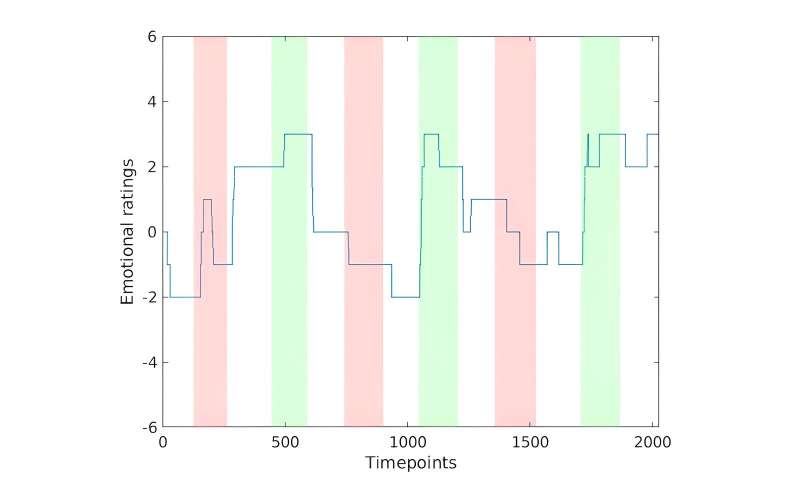Anhedonia-related emotional blunting is linked with abnormally sustained activity in brain areas responsible for attention. Researchers at the Department of Neuroimaging at the IoPPN used music to study the relationship between anhedonia and emotion-related brain activity. Anhedonia is a core symptom of depressive disorders, characterized by an inability to experience pleasure typically associated with pleasant stimuli and life events.
Previous studies of the effect of anhedonia used single emotional cues (images) and single subjective ratings (self-reporting). This study followed the unfolding emotional experiences of individuals across multiple, longer cues (happy, sad and neutral music clips).
The study observed 31 healthy individuals aged 18–30 with varying degrees of anhedonia listening to classical music pieces categorized into negative, neutral, and positive emotions (10 pieces in total, 30 seconds per piece). The researchers looked at how the individuals’ brains responded to and transitioned between alternating pieces. The findings are published in the journal Scientific Reports.
Participants’ emotional responses were continuously recorded during the MRI (magnetic resonance imaging) brain scan.
The researchers observed that individuals with greater anhedonia displayed less intense emotional responses and increased activity in the brain areas involved in paying attention to the external environment. Furthermore, this elevated brain activity during emotional music diminished more slowly and is still present when listening to subsequent emotionally neutral music.
-

Continuous subjective ratings for the participant with the lowest anhedonia score showed more intense emotional responses while listening to music. White = neutral songs, red = sad songs, and green = happy songs. Emotions were rated from -6 (most negative) to +6 (most positive). Credit: Scientific Reports (2024). DOI: 10.1038/s41598-024-70293-x
-

Continuous subjective ratings for the participant with the highest anhedonia score showed less intense emotional responses while listening to music. White = neutral songs, red = sad songs, and green = happy songs. Emotions were rated from -6 (most negative) to + 6 (most positive). Credit: Scientific Reports (2024). DOI: 10.1038/s41598-024-70293-x
“Our study is the first to characterize the dynamic time course of emotional reactivity linked with anhedonia using a real-world stimulus in the scanner. We also demonstrate abnormally persistent recruitment of brain networks, related to externally focused attention, evoked by emotional music,” said Dr. Owen O’Daly, senior lecturer at IoPPN and the study’s senior author.
“Whether such exaggerated brain activity reduces one’s capacity to regulate emotional states or simply disrupts the processing of significant emotional cues is an exciting question needing further investigation.
“Importantly, this study builds on previous investigations of anhedonia and demonstrates the value of combining functional MRI with experience sampling and more engaging, behaviorally-relevant naturalistic tasks, which we feel hold great potential for psychiatric neuroimaging.”
“What we found through this study is that individuals with anhedonia still feel sad and happy emotions when asked to engage in a task, but these emotions are not as intense,” said Dr. Marie-Stephanie Cahart, postdoctoral research associate at IoPPN and the study’s first author.
“What we observed looks like a form of emotional disengagement accompanied by prolonged activity in attention-related brain regions, especially during more neutral pieces of music. These neutral moments are what we’d like to research further as they may have more significance in anhedonia and depression than we expected.”
More information:
Marie-Stephanie Cahart et al, Anhedonia severity mediates the relationship between attentional networks recruitment and emotional blunting during music listening, Scientific Reports (2024). DOI: 10.1038/s41598-024-70293-x
Citation:
Music study links dulled emotional reactions in anhedonia with prolonged activity of the brain’s attentional networks (2024, August 30)
retrieved 30 August 2024
from https://medicalxpress.com/news/2024-08-music-links-dulled-emotional-reactions.html
This document is subject to copyright. Apart from any fair dealing for the purpose of private study or research, no
part may be reproduced without the written permission. The content is provided for information purposes only.

